The
alloys used to make the printing-plates and in general the tools used in 1800
were not so advanced and perfect like in today times. For this reason the
possibility of some "accident" during the way was not so
remote. Between the most evident signs of these "accidents"
are the plate faults. In fact all the issues of the Old Italian States present
in their set of varieties a more or less significant number of defects like
bumps, oxidation, breaks and so on.
A plate defect, that always originates from a change of the original plate
state, may have different origins. In some case it can be present even at
the onset of the issue. In other cases it can come out during the duplication
of the original tool (minting die) to assembly the printing-plate (see the
Lombardy-Venetia example where there are defects already present on stamps
with cancellations of the first day of issue!). In several other instances
it may appear from the usage of the plates or during the re-assembly of the
same plates: some hammer shot given without too much attention can leave visible
traces (typical case in Tuscany stamps), or some fusion defect may come out
during the printing itself.
The Modena stamps are not free from defects; on the opposite they show a big
variety that together with the known printing and composition defects give
the opportunity to the hobbyist for interesting specialized collections.
A fault may be occasional or repetitive: in the first case it's a temporary
break, sometime immediately repaired or substituted, therefore present only
on few pieces, in other cases the defect is constant and appears in several
issues, perhaps even in plates of different stamps. Their importance in the
study of the composition of the stamps is very significant because it allows
often for the identification of the exact stamp position in the plate and
to follow the evolution of the stamping plates itself. Here are shown several
pieces of the issue "Coat of arms" (either with dot or without or
for newspaper) with evident signs of "subsiding" or of breaking
of the plate. They are only few of the most that can be found in the study
of the plates. I have chosen some piece with very evident faults (Fig.
from 2 to 16), leaving several of minor importance as dimensions but by
sure not to the aim of a deeper study (small bumps or interruptions of the
frame, small drawing distortions etc.).
Be careful not to confuse a plate defect with an occasional missing of printing
that, even if interesting and often very visible has very different roots
and consequences (Fig. 1).
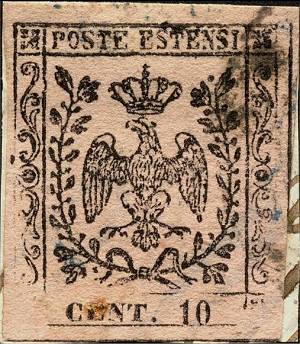
Fig. 1: large missing printing
in the lower part
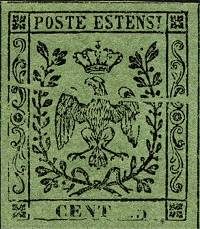 |
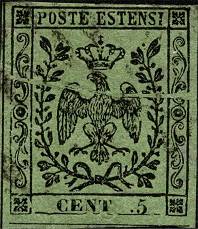 |
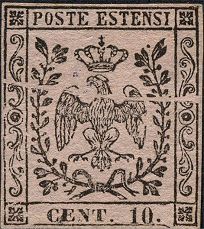 |
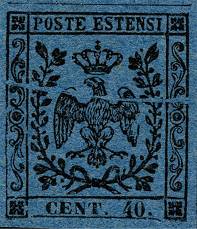 |
|
Fig.
2/5: the "Coat of arm" is cut:
it is repetitive and evident.
On top of that, these pieces present other peculiarities. To you the pleasure to find out... |
|
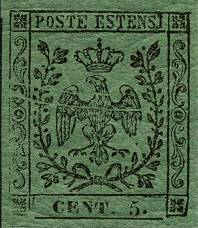 |
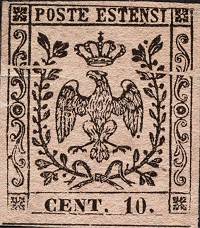 |
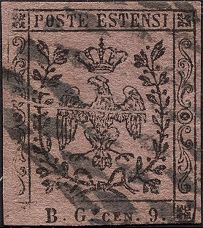 |
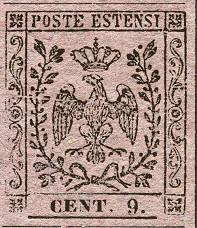 |
|
Fig.
6/9: other examples of "Coat of
arms cut"
|
|
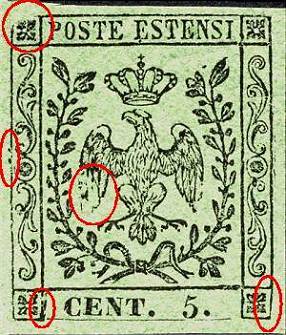 |
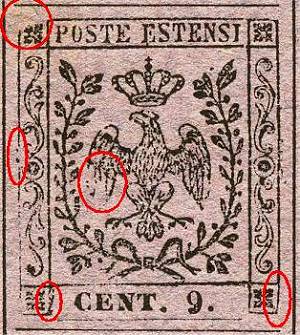 |
|
Fig.
10-11: upper left corner missing; as
it can be seen the plate used is the same
and it can be noticed by the several defects in common. |
|
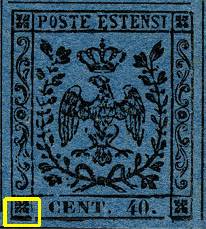 |
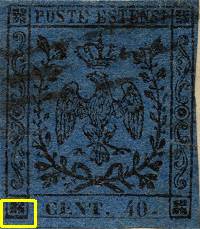 |
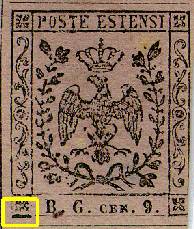 |
|
Fig.
12-13-14: trait strengthened on lower
left
|
||
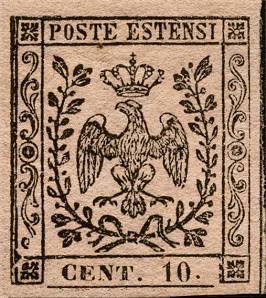 |
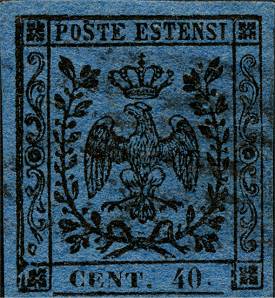 |
|
Fig.
15-16: vertical left border split in
two
|
|